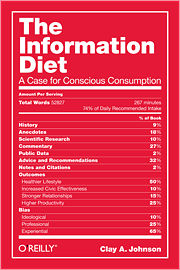After over a year of speculation, Facebook has finally announced the terms of its US stock market float, valuing the company at $50 billion dollars according to Facebook’s SEC filing.
The financial details that we’ve speculated over are now public and we can now make more than informed guesses about what Facebook is worth.
What jumps out when first looking at Facebook’s financial figures is the exponential growth in their revenue from 153 million dollars in 2007 to $3,700 million last year. A twenty-fold increase over four years.
Expenses though haven’t grown at the same rate going from 277 million to 1.95 billion over the same period. Like all bigger social media and web 2.0 companies, sales and marketing is the biggest expense.
The Google Experience
The closest comparison to Facebook is Google’s float in 2004. Google floated at a market capitalisation of 23 billion dollars on a reported revenue in their SEC statement of 389 million.
At the time, Google’s profit margins were substantially lower with costs coming in at 234 million. These figures alone indicate Facebook today is a better prospect that Google was at the time of being floated.
Google today is valued at $190 billion on a revenue of $38 billion and a profit of $25 billion. On those measures, Facebook investors will be expecting that exponential growth to continue.
Growing Income
How Facebook continues to grow their revenue is the big question. Currently over half of their revenue comes from advertising in the United States and the bulk of the rest from Canada, Australia and Western Europe.
If online advertising continues to grow spectacularly, as a 2010 Morgan Stanley research paper illustrated then Facebook, as the biggest social medial platform, will get a large slice of that $50 billion global market opportunity. This in itself would justify their valuation.
One of Facebook’s biggest growth opportunities comes from games. Already Zynga, the developers of Farmville and Mafia Wars, contribute 12% of Facebook’s revenues.
The global games business is valued at 60 billion dollars and much of this market is moving to web based, online platforms. Facebook’s 30% cut of income from games on their service is another lucrative revenue stream with few operating costs.
While advertising remains Facebook’s main income stream, other payments from games and online payments went from almost 0 in 2010 to nearly 17% of income at the end of 2011.
The threats
This isn’t to say Facebook doesn’t face any threats in their businesses. The concentration of income from North America, Europe and Australia exposes how the service is a first world phenomenon, although they have high penetration rates in some countries like Chile and hope to achieve similar in India.
Social media though is a fast moving field and there are plenty of opportunities for upstart businesses to displace Facebook just as MySpace faded away.
In their established markets there’s the question of how sustainable social media as an advertising platform is; until recently social media was a novelty to most households and still is to businesses and advertisers.
User fatigue is possible in the mature markets and Facebook – along with other social media services – not achieve the advertising revenue they hope.
Privacy issues are also another concern; as users realise the value of their private information it may be that they demand more for it than seeing where their friends are drinking or playing an online game for free.
Overall though, Facebook does appear to be worth the 50 billion dollar valuation when compared to other similar businesses like Google and is probably more sensibly priced than recent other IPOs like Groupon and Zynga.
Whether the service will deliver on its promise remains to be seen, but those are the risks when investing in new industries.




